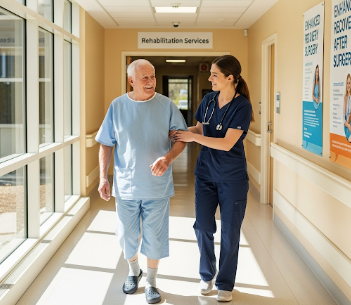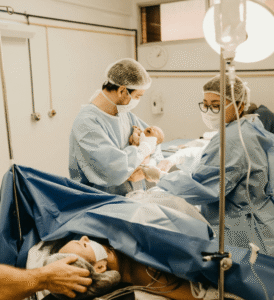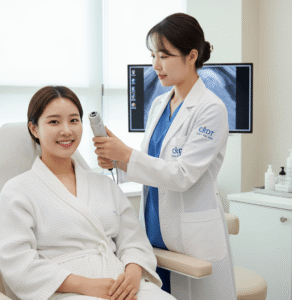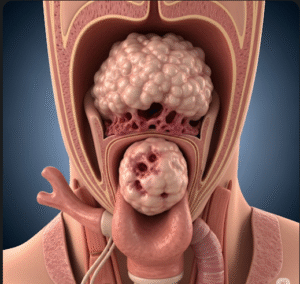What is Enhanced Recovery?
Enhanced Recovery, also known as Enhanced Recovery After Surgery (ERAS), is a modern, multidisciplinary approach designed to accelerate patient recovery after surgical procedures. It combines preoperative, intraoperative, and postoperative strategies to reduce complications, shorten hospital stays, and improve outcomes.
💡 Key components include:
✔️ Patient education and counseling – Preparing patients for surgery and recovery
✔️ Optimized nutrition – Pre- and post-operative nutritional strategies
✔️ Minimally invasive surgical techniques – Laparoscopic or robotic-assisted procedures
✔️ Effective pain management – Multimodal analgesia to reduce opioid use
✔️ Early mobilization – Encouraging walking and physical activity shortly after surgery
Goal:
➡️ Reduce the physical and psychological stress of surgery
➡️ Improve surgical outcomes and patient satisfaction
➡️ Shorten recovery time while maintaining safety
In Korea, enhanced recovery protocols are implemented in major hospitals and surgical centers, particularly for orthopedic, gastrointestinal, urological, and gynecological surgeries.
Why It’s Done
Enhanced recovery is implemented to improve patient outcomes and optimize healthcare resources.
✔️ Reduce post-operative complications – Infection, ileus, blood clots, or pneumonia
✔️ Accelerate recovery and shorten hospital stays – Early mobilization and optimized care
✔️ Minimize opioid use – Multimodal analgesia reduces side effects and dependency
✔️ Improve patient satisfaction – Reduced discomfort and faster return to normal life
✔️ Optimize healthcare efficiency – Lower hospitalization costs and resource utilization
Clinical Benefits:
➡️ Shorter hospital stays → Faster discharge and reduced costs
➡️ Lower complication rates → Fewer infections, less blood loss, and reduced ileus
➡️ Faster return to daily activities → Promotes physical and psychological recovery
➡️ Improved patient engagement → Active participation in recovery process
In Korea, ERAS programs are widely adopted in high-volume surgical centers, supported by experienced surgeons, anesthesiologists, and nursing teams.
Alternatives / Complementary Approaches
While ERAS represents the most structured recovery pathway, other approaches may be used:
⭐ Traditional post-operative care – Extended fasting, limited mobilization, and standard analgesia
⭐ Fast-track surgery protocols – Early discharge strategies without full multidisciplinary ERAS framework
⭐ Rehabilitation-focused recovery – Physiotherapy and occupational therapy post-surgery
⭐ Complementary therapies – Acupuncture, meditation, or guided relaxation for stress management
👉 Key Point: ERAS is evidence-based and generally superior to traditional approaches in improving recovery speed and reducing complications.
Preparation
Preparation is a critical step in enhanced recovery and involves patient engagement and optimization:
🔹 Preoperative counseling – Explaining the procedure, recovery plan, and expectations
🔹 Nutrition optimization – High-protein diets, carbohydrate loading, and avoiding prolonged fasting
🔹 Medication review – Adjusting anticoagulants, diabetic medications, and other relevant drugs
🔹 Physical preparation – Prehabilitation exercises and mobility planning
🔹 Psychological preparation – Addressing anxiety, sleep issues, or fears
⭐ Smoking cessation and alcohol reduction improve surgical outcomes
⭐ Patient education ensures adherence to ERAS protocols
How It’s Done
Enhanced recovery is implemented as a coordinated, multi-stage process:
- Preoperative Stage
✔️ Patient counseling, nutritional optimization, and prehabilitation exercises
✔️ Preoperative carbohydrate drinks to reduce insulin resistance
✔️ Minimal fasting and early medication management - Intraoperative Stage
🔹 Use of minimally invasive techniques (laparoscopy, robotic surgery)
🔹 Goal-directed fluid therapy to avoid overload or dehydration
🔹 Multimodal anesthesia to reduce opioids and enhance post-operative pain control - Postoperative Stage
➡️ Early mobilization – Walking and physiotherapy within hours after surgery
➡️ Early oral intake – Resuming fluids and nutrition as soon as tolerated
➡️ Pain control – Non-opioid analgesics, regional anesthesia, or patient-controlled analgesia
Highlights:
✔️ Structured, evidence-based protocols
✔️ Multidisciplinary collaboration – Surgeons, anesthesiologists, nurses, and physiotherapists
✔️ Patient-centered approach – Actively involves patients in recovery process
Recovery / Follow-up
Recovery under ERAS programs is faster and smoother:
✔️ Shorter hospital stay – Often 1–3 days for minimally invasive procedures
✔️ Rapid return of bowel function – Especially in abdominal surgeries
✔️ Early mobilization – Reduces risk of blood clots, pneumonia, and muscle loss
✔️ Active follow-up – Outpatient visits, telemedicine, or home physiotherapy
⭐ Patients can often resume normal activities sooner compared to traditional post-operative care
⭐ Continuous monitoring ensures early detection of complications
Complications / Risks
While ERAS improves outcomes, potential complications include:
⚠️ Surgical site infection – Despite minimized risk, still possible
⚠️ Anesthesia-related complications – Allergic reactions or cardiovascular issues
⚠️ Postoperative nausea or vomiting – Reduced but may occur with anesthesia
⚠️ Patient non-compliance – Skipping early mobilization or nutrition can affect recovery
⚠️ Unexpected surgical complications – Bleeding, organ injury, or delayed healing
➡️ In Korea, trained ERAS teams, advanced monitoring, and patient education minimize these risks.
Treatment Options in Korea
Korean hospitals offer comprehensive enhanced recovery programs for multiple surgeries:
🏥 Gastrointestinal surgery ERAS – Laparoscopic colectomy, gastrectomy, bariatric surgery
🏥 Orthopedic ERAS – Joint replacement, spine surgery, fracture repair
🏥 Urological ERAS – Prostatectomy, nephrectomy, bladder surgery
🏥 Gynecological ERAS – Hysterectomy, ovarian surgery
🏥 Multidisciplinary teams – Surgeons, anesthesiologists, nurses, nutritionists, and physiotherapists
Why Korea is a Preferred Destination:
✔️ High-volume surgical centers – Experience with ERAS across multiple specialties
✔️ Advanced minimally invasive surgery techniques – Laparoscopic, robotic, and endoscopic procedures
✔️ Dedicated ERAS coordinators – Ensure adherence to protocols
✔️ Patient-centered care – Emphasis on comfort, early recovery, and safety
✔️ Affordable and efficient – Shorter hospital stays reduce overall cost
Approximate Costs in Korea:
🔹 ERAS-based surgery (GI or Orthopedic) → $3,000 – $10,000 depending on procedure
🔹 Hospital stay → $100 – $400 per day, often shorter than traditional care
🔹 Postoperative physiotherapy and nutrition support → $50 – $200
🔹 Comprehensive ERAS package → $5,000 – $12,000 including surgery and enhanced recovery program
Conclusion
Enhanced recovery programs represent a revolution in surgical care, improving outcomes, reducing complications, and enhancing patient satisfaction.
They help patients:
✔️ Recover faster with minimal discomfort
✔️ Reduce post-operative complications
✔️ Resume normal activities sooner
✔️ Benefit from evidence-based, structured care
In Korea, patients benefit from:
✔️ Advanced surgical and recovery protocols
✔️ Experienced multidisciplinary teams
✔️ Minimally invasive surgical techniques
✔️ Patient-centered, cost-effective care
👉 Key Message: Enhanced Recovery After Surgery (ERAS) in Korea provides safe, efficient, and patient-focused pathways that accelerate healing, improve outcomes, and support patients and families throughout the surgical journey.













